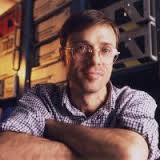
As a 10-year-old idly playing with my father's calculator one night, I suddenly discovered both a strange numerical pattern and my life's calling. I'll never forget the thrilling moment when I realized that the fraction 1/89 was deeply related to the Fibonacci numbers -- it was the birth of my research career.
The pursuit of unexpected connections still defines my work. As manager of IBM's Agents and Emergent Phenomena group at the Thomas J. Watson Research Center in Hawthorne, New York, I explore and exploit analogies between large-scale distributed computer systems and both ecosystems and economies. During my career, I've been fascinated and inspired by the similarities of computer viruses to biological viruses, the prospect of an economy of selfishly motivated software agents buying and selling information goods and services to one another in cyberspace, and most recently the use of biological and economic principles to guide efforts to reduce the complexity of managing large-scale computing systems and data centers.
When I first joined IBM, I delved into macroscopic and microscopic analogies between computer viruses and their biological counterparts. By augmenting traditional epidemiological models to take into account the detailed patterns of infectious contact in computer networks, I was able to find some explanations for why computer viruses spread more slowly and less pervasively than had been predicted previously. With my colleagues, I developed and patented several biologically-inspired techniques for defending against computer viruses, including the industry's only neural-network virus detector, and an immune system for cyberspace that automatically discovers, captures, analyzes, and cures new viruses within minutes of their appearance.
Later, I led the Information Economies project, which envisioned the merging of the world economy and the Internet into an information economy bustling with billions of economically motivated software agents that exchange goods and services with humans and other agents. Although economic software agents will represent consumers or businesses in cyberspace, they will not behave exactly as humans do. They will make decisions orders of magnitude faster, and will have more information on which to base their decisions. On the other hand, they will have a lot less common sense. Markets could behave in unfamiliar ways when appreciable numbers of non-human economic players are introduced. Rather than using the world's economy as an experimental testbed, my team used modeling, analysis and simulation to study and redesign agent strategies, protocols and market mechanisms in the laboratory, thereby gaining interesting insights into situations in which agents either stabilized and de-stabilized economic behavior.
In more recent years, I've helped establish autonomic computing (the study of self-managing large-scale computing systems) as an academic discipline by co-authoring an oft-cited IEEE Computer paper and by working with colleagues in academia to create the International Conference on Autonomic Computing. These days, my team is especially focused on the problem of reducing energy consumption in data centers and buildings through autonomic and economic mechanisms.
Although I graduated with a BSEE from Princeton and a Ph.D. in electrical engineering from Stanford, my academic studies focused more on physics and applied mathematics. My doctoral research was an experimental and theoretical study of channeling radiation, a novel form of quasi-monochromatic X-ray and gamma-ray radiation emitted by relativistic electrons and positrons passing through aligned crystals. Afterwards, I spent two years at the Xerox PARC research center studying the nonlinear dynamical behavior of massively distributed systems of the future. Then, in 1990, I came to IBM Research with the goal of not just predicting the future, but also helping to make it happen.
I live in New York with my wife, two children, three cats of undistinguished pedigree, a set of juggling clubs, a badly abused unicycle, and a large family of recorders from contrabass to sopranino that are occasionally seen in public at local churches and restaurants.
To learn more about my former and current research activities, see the Autonomic Data Center Energy Management, Information Economies, SwiftFile, and IBM AntiVirus homepages.
Ph.D. Stanford University
BSEE Princeton University
Autonomic Computing, Neural Networks, Machine Learning, Energy Consumption
